RevOps tech stack: The complete guide to top 5 tools you should use in your work
Discover the RevOps formula and how it can utterly transform your company’s financial performance with insights from our experts.

Part 1: Skyrocket your revenue with a complete guide to RevOps Revenue Operations
Part 2: Beginner’s guide to RevOps tech stack
Part 3: 13 revops best practices companies follow this year
Part 4: Rev Ops vs Sales Ops: Know the difference
Part 5: 10 revops metrics and KPIs to track your revenue operations performance
Part 6: Unlocking success: the ultimate revenue growth framework
Welcome to the riveting world of Revenue Operations, commonly known as RevOps. If you’re a novice seeking to understand this realm, you’ve come to the right place. This article will serve as your gateway into the intricacies of the RevOps machine, a game changer in the business landscape.
We’ll navigate through the sea of stack tools, which form the building blocks of this machine, and delve into the revolutionary concept of low-code automation. Brace yourself for an exciting journey that promises to equip you with the knowledge and tools to leverage the power of the RevOps stack to your advantage. Let the exploration begin!
RevOps, short for Revenue Operations, is a dynamic strategy that unifies your sales, marketing, and customer service teams to boost overall performance.
Think of it like a well-oiled machine, where each part works harmoniously with the others to drive your business forward.
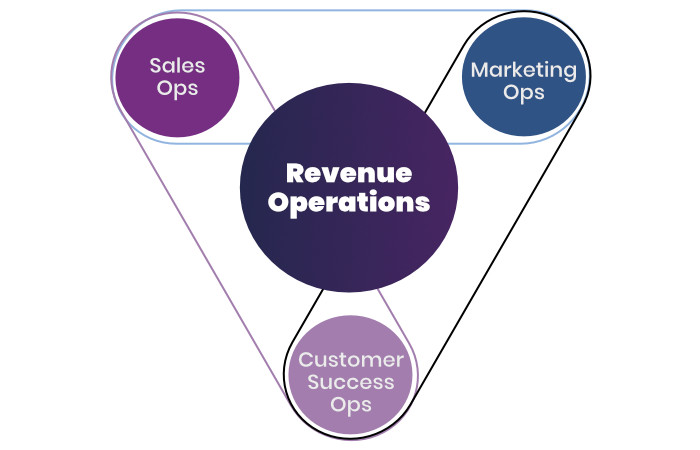
- First, imagine your sales team as the engine. They’re the ones out there on the front lines, driving sales performance and bringing in revenue.
- Second, your growth marketing team is like the navigation system. They map out the market terrain, identify potential customers and chart the most effective routes to reach them.
- Third, your customer service team acts as the maintenance crew. They keep your existing customers happy, ensuring your business machine runs smooth and steady.
The beauty of RevOps is that it brings these three key components together. Instead of working in separate silos, they collaborate and share data, resulting in a unified, efficient strategy that accelerates customer led growth.
It’s a game-changing approach that’s perfect for businesses of all sizes looking to streamline operations and maximize revenue.
The Why and How of Revenue Operations (RevOps)
In today’s ultra-competitive marketplace, businesses are constantly seeking ways to streamline their operations and boost their bottom line. That’s where RevOps shines. Its seamless integration of sales, marketing, and customer service functions offers a host of compelling benefits:
- Enhanced Collaboration: RevOps brings disparate teams together, fostering a culture of collaboration. This unified approach ensures everyone is on the same page, working towards common goals.
- Increased Efficiency: By breaking down silos and sharing data across departments, RevOps helps companies streamline their processes. This results in more efficient product metrics framework operations, saving both time and resources.
- Improved Decision Making: RevOps promotes data-driven decisions. By having a holistic view of the business, decision-makers can make more informed, strategic choices.
- Boosted Revenue: Ultimately, the goal of RevOps is to increase revenue. By aligning all operations toward this objective, businesses can expect a significant uptick in their bottom line.
Key reasons why businesses adopt RevOps:
- To align their sales, marketing, and customer service teams
- To improve operational efficiency
- To make more data-driven decisions
- To increase company revenue
In essence, RevOps isn’t just a growth marketing strategy template; it’s a philosophy that places revenue generation at the heart of all business operations. It’s a clear route to a more prosperous and efficient future for any business ready to embrace it.
If you’re interested in current trends, read more to compare RevOps vs SalesOps.
Overcoming Challenges in Building an Effective RevOps Tech Stack
Of course, building a RevOps tech stack, while essential for business success, does come with its own set of challenges:
- integration
- cost
- complexity
- data overload
- changing needs
Understanding these hurdles can help your business growth experts navigate them more effectively.
Integration
One of the main challenges is ensuring that all the tools in your stack integrate seamlessly with each other and with your existing systems. Incompatibility can lead to data silos and inefficiency. To tackle this, ensure you choose tools that offer easy integration with each other or consider using middleware that can bridge the gap between different platforms.
Cost
High-tech tools often come with hefty price tags. It’s essential to balance the cost of tools with the value they bring to your business. Look for tools that offer scalable plans, so you only pay for what you need, or consider open-source or free alternatives that suit your needs.
Complexity
Sometimes, the tools can be too complex to use, especially for beginners. To counter this, invest time in training your team and take advantage of online tutorials and customer support offered by the tool providers.
Data Overload
With multiple tools comes multiple data sets. Managing and making sense of this data can be overwhelming. Using growth marketing analytics tools and adopting a data-driven culture can help you turn this data into useful insights.
Changing Needs
As your business grows, your needs might change. The tools that worked initially might not be the best fit later on. Regularly reviewing your tech stack and staying flexible can help you adapt to changing needs.
Remember, every challenge is an opportunity in disguise. Understanding these issues and planning for them can help you build a RevOps stack that propels your business to new heights.
Read also:
- What is sales enablement? Definite guide + Strategy + Tools for 2024
- How to measure success: 20+ sales enablement metrics to track in 2024
- Harnessing the power of AI sales enablement: 5 strategies to transform your sales process
- 10 steps to building a sales enablement strategy in 2024
- 7-steps guide on how to create an automated sales funnel in 2024: examples & tools
- 7 sales enablement best practices to empower your team and boost performance
- 10 sales enablement tools: Best software to grow your team performance
- Guide on sales enablement team structure: 10 roles and responsibilities
- Mastering sales automation: A comprehensive guide to best practices and tools
- Sales and marketing automation: How to align their workflow to 2x revenue [Dashly example]
- Top 13 sales automation tools to propel your sales strategy
Picking the right tools
Choosing the right RevOps tools is a lot like putting together a puzzle — you need to find the perfect tech pieces that fit together seamlessly to complete the picture of a well-oiled revenue-generating machine. Picking the right tool stack is essential for your RevOps success, but how do you choose?
- Understand Your Needs: Every business has unique needs. Start by identifying the specific challenges in your sales, marketing, and customer services that you want to address.
- Evaluate Features: Once you have a clear understanding of your needs, look for tools that offer the right solutions. Check out features, compatibility with existing systems, and user-friendliness.
- Test Before Purchase: Many tech providers offer trial versions of their products. This allows you to test whether the tool is the perfect fit for your business before making a financial commitment.
Here are some tools worth considering in your RevOps journey:
Dashly
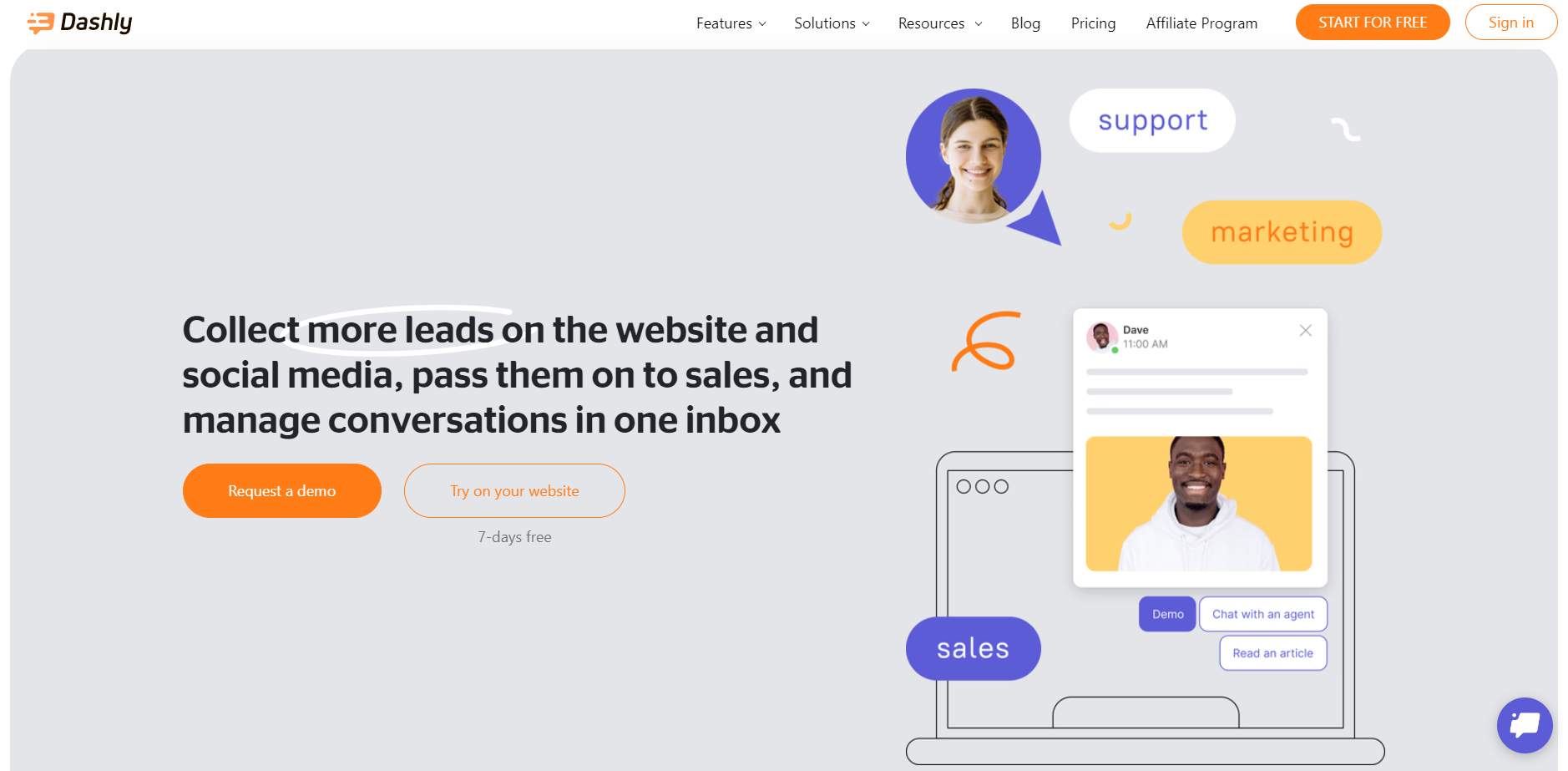
In case you’re already using it or just considering Dashly for your needs — yes, Dashly can be a significant part of your RevOps stack as well. It’s a comprehensive tool that combines various aspects of marketing, sales, and customer service. Dashly’s featured tools include live chat, pop-ups, and email marketing automation—all in one platform.
- The live chat feature, for instance, allows the sales team to interact directly with customers, while the marketing team can use email automation to effectively reach out to prospects. Plus, the pop-ups help in increasing engagement and conversion rates.
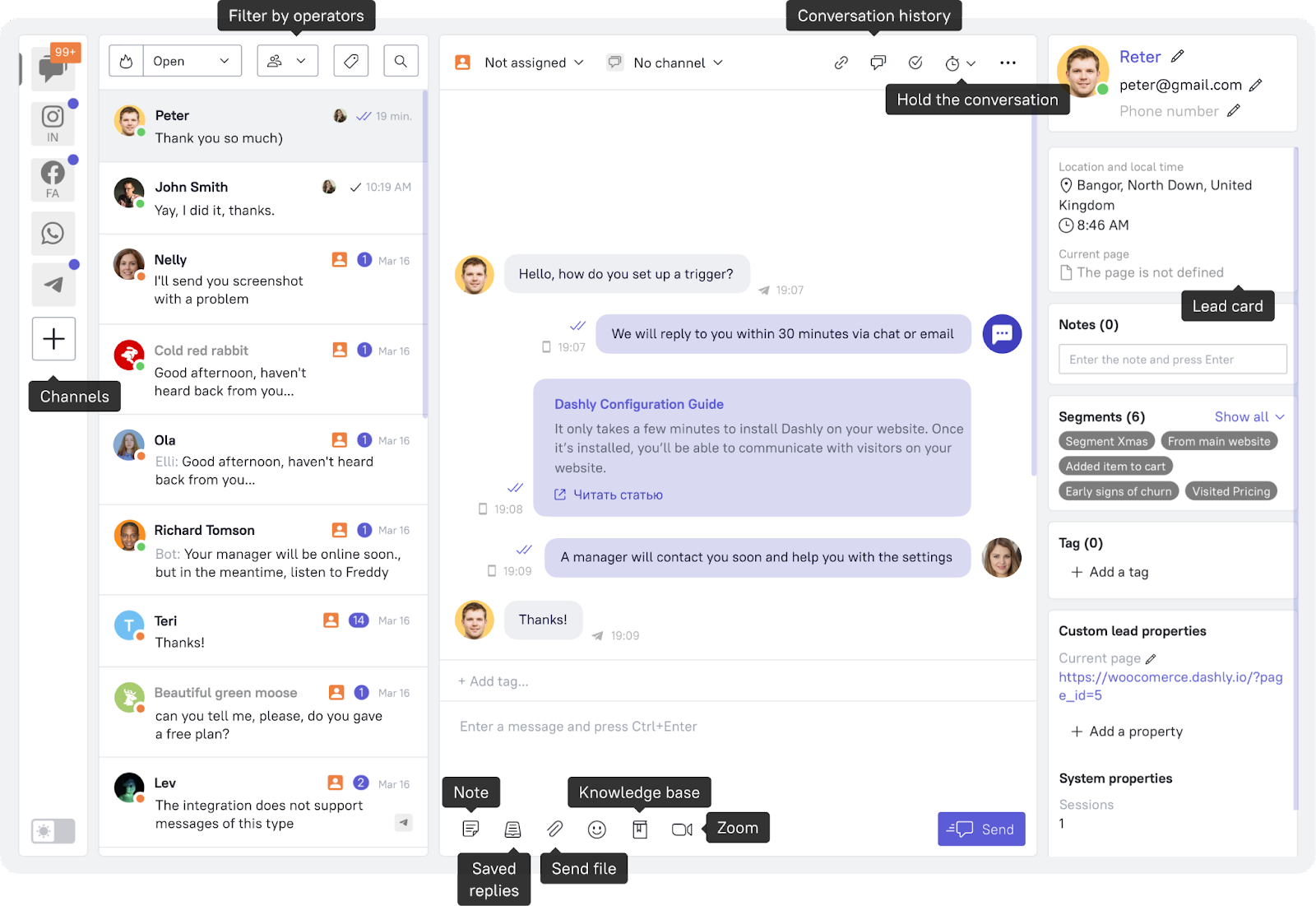
The integration across different departments facilitates communication and collaboration, central to a successful RevOps strategy — integrations with socials like Instagram or messengers like WhatsApp can help you get closer to your clients. Dashly’s ability to collect and analyze customer data also supports data-driven decision making, another key RevOps principle.
Salesforce
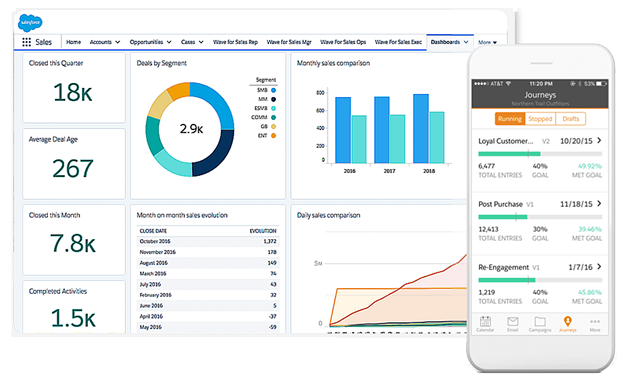
Salesforce is a powerful tool that can be a cornerstone of your RevOps strategy. Its robust customer relationship management (CRM) capabilities allow for meticulous tracking and management of customer interactions, enhancing your sales performance.
For example, a sales team can use Salesforce to track customer behavior, such as engagement with emails or website visits. This information can assist in identifying potential sales opportunities and determining the best time to follow up with prospects.
Marketo
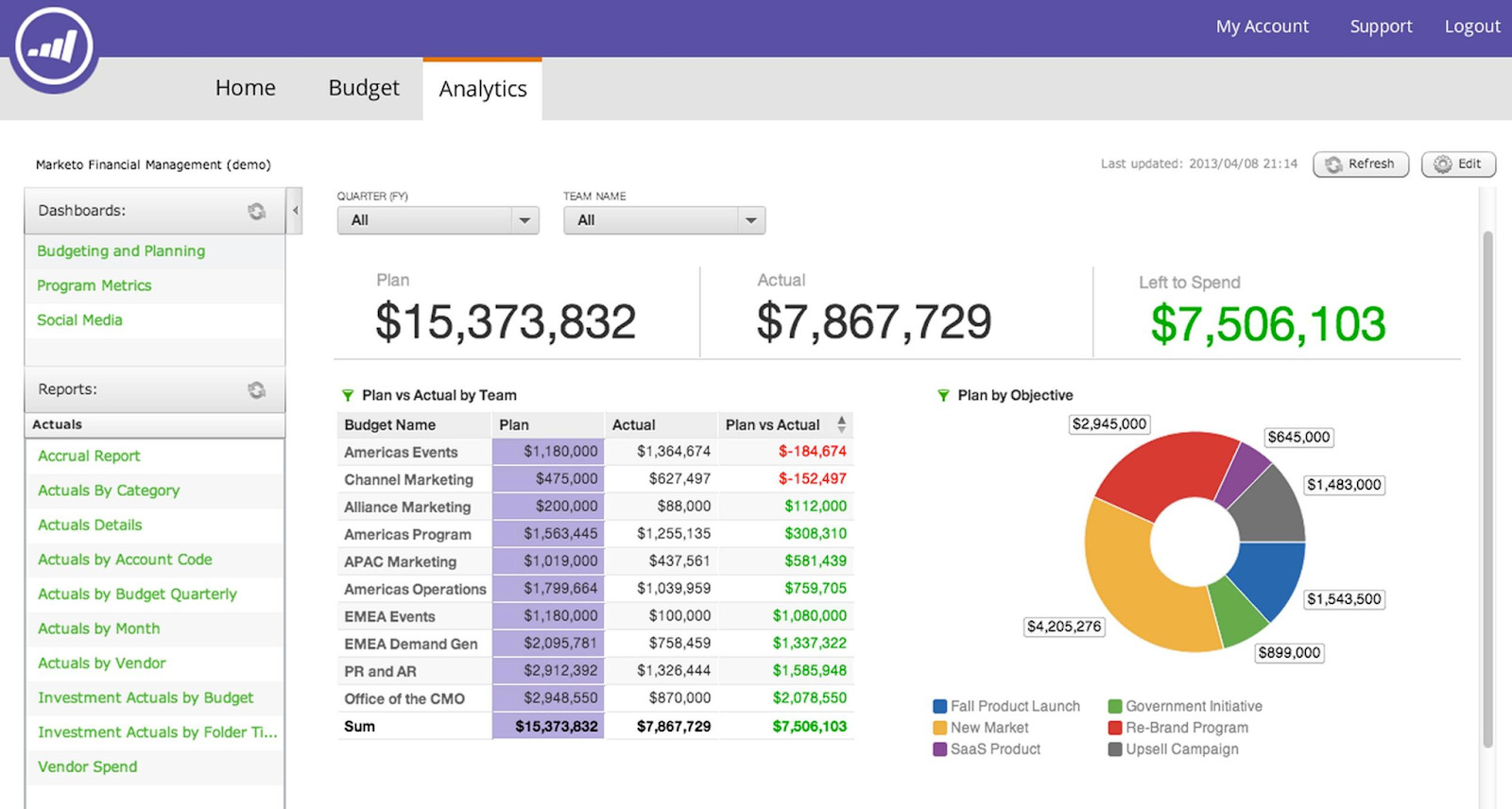
An Adobe product, Marketo is excellent for automating and measuring marketing activities, helping you focus on the right leads. Marketo optimizes the process of engaging with prospects and nurturing them into customers, allows you to score your leads based on their level of engagement, making it easier for sales to prioritize and reach out to the most promising prospects.
Gong.io
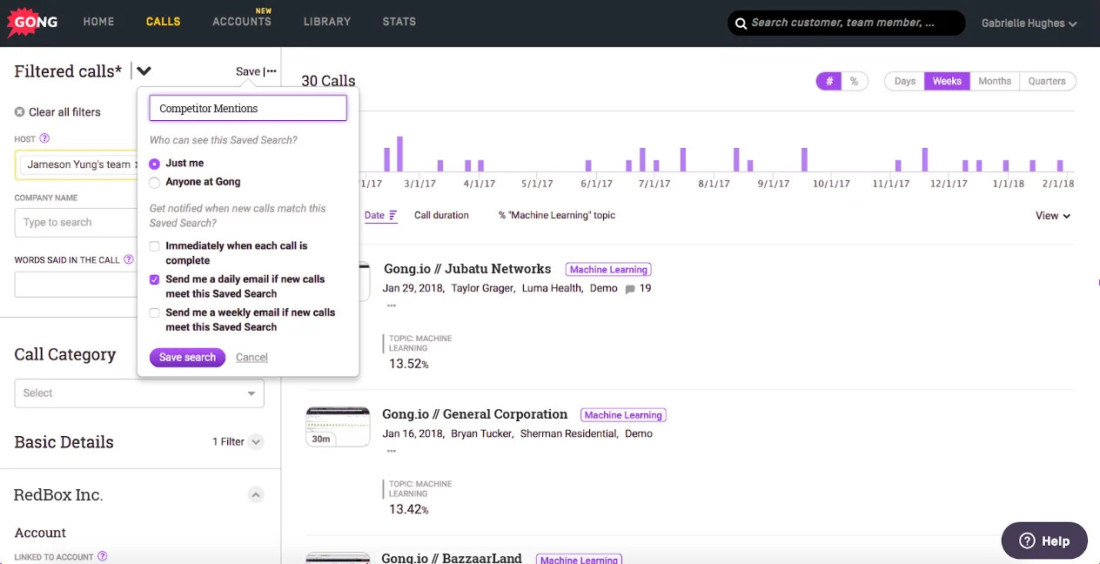
Gong is one of the growth marketing services. It is a conversation analytics platform that can be invaluable for sales teams, providing insights into what’s working (and what’s not) in your sales calls and demos.
DealHub.io
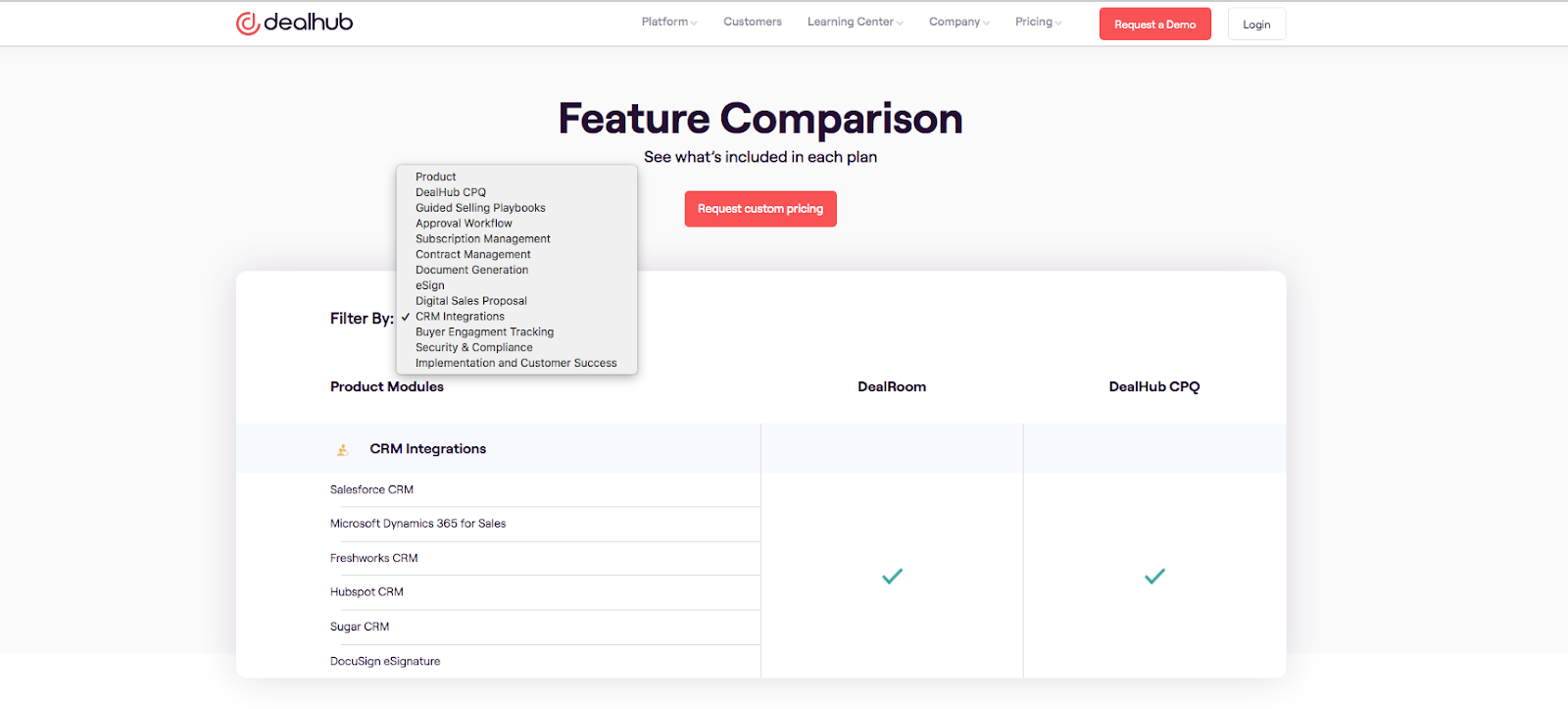
Known for its Configure-Price-Quote (CPQ) solution, DealHub can help streamline your sales process, improve proposal accuracy, and accelerate sales cycles.
Remember, the key to getting your tool stack right is ensuring that all the tools integrate well with each other and fit your specific needs. The perfect tech isn’t about the price tag or popularity; it’s about finding what works best for your business.
Want more?
Grab your free Growth marketing playbook: 40+ templates for successful experiments
Wrapping up
Implementing a well-structured RevOps tech stack is not just a fleeting trend, but a crucial strategy to stay competitive in today’s dynamic business landscape. The path to a successful RevOps implementation may be fraught with challenges — from integration issues to cost considerations — but remember, these are merely stepping stones to your ultimate goal of streamlined operations and maximized revenue.
The right tools, when chosen thoughtfully, can propel your business forward, breaking down silos and fostering a culture of collaboration and efficiency. So, take that step, embrace the change, and chart a path toward a more prosperous and efficient future for your business. After all, in the world of Revenue Operations, the sky is truly the limit 😉
FAQ
What is a RevOps tool stack?
A RevOps tool stack is a collection of software tools that businesses use to manage and optimize their revenue operations (RevOps). It seamlessly combines sales, marketing, and customer service functions to streamline processes and foster collaboration.
What’s an example of the RevOps tech stack strategy?
An example of a RevOps tech stack strategy could be using Salesforce for managing sales and customer relationships, Dashly for automating marketing activities and handling customer service, and Looker for data analysis across all departments. This ensures a unified approach to revenue operations where all tools work in tandem, improving efficiency and ultimately driving business growth loops.
What should I consider when choosing a tool for my RevOps stack?
Consider the following factors when choosing a tool for your RevOps stack:
– Your business needs and challenges
– The tool’s features, capabilities, and compatibility with existing systems
– User-friendliness and ease of integration
– The cost and return on investment
Do I need to use all recommended tools in my RevOps stack?
Not necessarily. The tools you choose should align with your specific business needs. It’s not about the number of growth marketing tools you have, but about choosing the right ones that offer the solutions you need.
Is it expensive to build a RevOps tool stack?
The cost of a RevOps tool stack can vary greatly depending on the specific tools you choose. Some tools offer free versions or trials, while others require a subscription or purchase. It’s important to consider not just the cost, but also the return on investment that the tool can provide.
Read also:
- Demand Generation vs Growth Marketing: Where to focus?
- Growth marketing vs Performance marketing: What to choose for your business?
- PLG Product Led Growth Marketing: a step-by-step guide to hacking product growth
- Product led growth metrics: 13 key indicators for SaaS companies to track
- PLG tools: ultimate guide to the best instruments
- Benefits of Product led growth: 12 PLG benefits for your business
- Top 10 product led growth software your competitors use in 2023
- 10 product led growth companies that boost their development right now
- 25 Growth Marketing Books to Skyrocket Success
- B2B growth marketing: accelerating business success
- 22 SaaS growth hack Facebook tactics to boost your business
- Growth marketing newsletter: 18 expert digests for regular insights
- Revenue operations metrics: 10 metrics and KPIs to track your performance
- Sales led growth: what is it and why your business needs it
- Growth marketing case studies: 12 stories with detailed tactics and numbers achieved
- RevOps best practices: 13 tactics to implement this year




![The ultimate guide to growth marketing in 2025 [explained by a growth hacker]](https://www.dashly.io/blog/wp-content/uploads/2023/04/The-ultimate-guide-to-growth-marketing-explained-by-a-growth-hacker-720x317.png)
